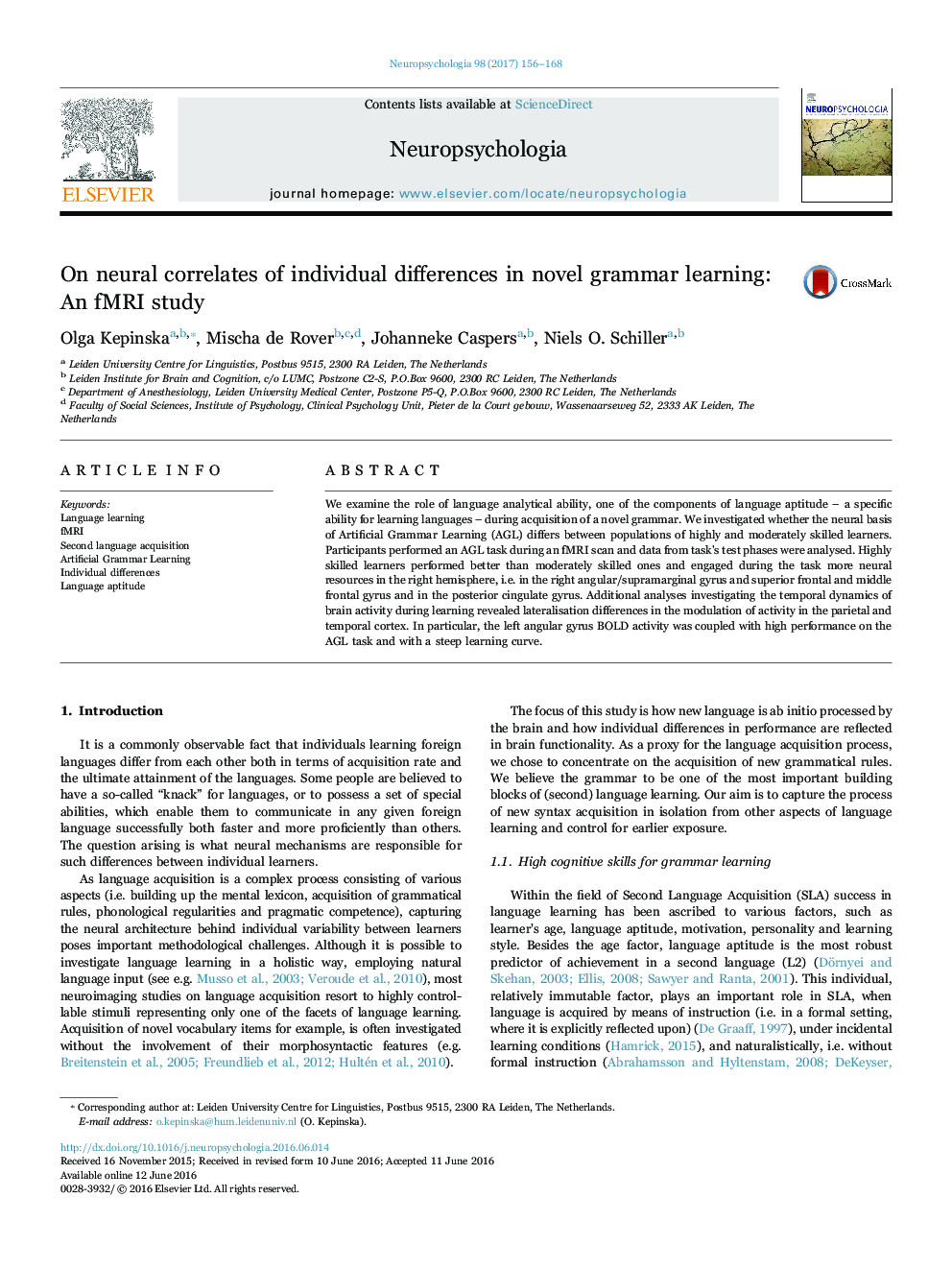| Article ID | Journal | Published Year | Pages | File Type |
|---|---|---|---|---|
| 5045278 | Neuropsychologia | 2017 | 13 Pages |
â¢We investigate individual differences in Artificial Grammar Learning during fMRI.â¢More brain activity in the right hemisphere was found for highly skilled learners.â¢The left angular gyrus activity marked increase in proficiency in the new language.â¢Engagement of the right parietal regions is crucial for efficient grammar learning.â¢To process new rules proficiently, the left-hemisphere activations must be present.
We examine the role of language analytical ability, one of the components of language aptitude - a specific ability for learning languages - during acquisition of a novel grammar. We investigated whether the neural basis of Artificial Grammar Learning (AGL) differs between populations of highly and moderately skilled learners. Participants performed an AGL task during an fMRI scan and data from task's test phases were analysed. Highly skilled learners performed better than moderately skilled ones and engaged during the task more neural resources in the right hemisphere, i.e. in the right angular/supramarginal gyrus and superior frontal and middle frontal gyrus and in the posterior cingulate gyrus. Additional analyses investigating the temporal dynamics of brain activity during learning revealed lateralisation differences in the modulation of activity in the parietal and temporal cortex. In particular, the left angular gyrus BOLD activity was coupled with high performance on the AGL task and with a steep learning curve.
